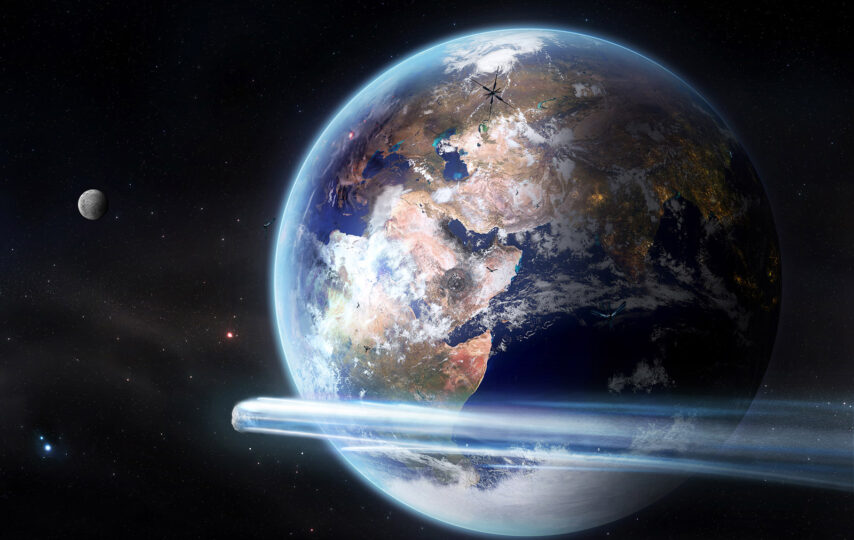Today, crewed orbital missions don’t surprise anyone, but the path to the stars was not paved overnight. The first spaceflights posed a greater danger than today’s missions when even civilian tourists are officially allowed onboard. So, has anybody died in space during the history of exploration? Sadly, yes, but the exact number of deaths will depend on how you define the edge of space. According to NASA, for example, it begins at an altitude of 80 km, while Fédération Aéronautique Internationale (FAI) considered cosmic edge to begin after the Karman line, 100 km above the ground. So, some unfortunate aeronautical test flights fall under NASA’s space death category, but not under FAI’s.
Besides, it’s unfair to ignore all the accidents and disasters in spaceflight that occurred below this conditional cosmic border — either during training, on descent, or shortly after launch. So, to honour the people who made spaceflights possible and safe, the right question is — how many people have died in space accidents? Below, we will discuss the biggest disasters in the history of crewed missions — both during missions and in the preparation stage.
Has anyone died in space flight preparation?
Unfortunately, yes — four astronauts died even before their missions started. The first accident occurred in the USSR on March 23, 1961, when a fire broke out in the astronaut training chamber. Valentin Bondarenko was at the end of his 10-day isolation test. The astronaut took off his measuring sensors, dabbed the skin with a cotton swab, and threw an alcohol-dipped swab away. It landed on the stove and caught fire, immediately spreading in an oxygen-filled chamber. Bondarenko died of severe burns in a hospital eight hours after the incident.
An even larger fire broke out during Apollo 1 mission tests, killing three astronauts — Roger Chaffee, Virgil Grissom, and Edward White. Instead of a human error, like in Bondarenko’s case, an electrical shortage caused a spark that led to a fire. The crew rehearsing at the launch site on January 27, 1967, could not open the locks of the pressure chamber quickly enough and died of poisoning from combustion chemicals 14 seconds after the fire started.
First death in space missions

The first death on a mission occurred on April 23, 1967. Vladimir Komarov’s mission was supposed to test the Soyuz-1 spacecraft in crewed mode and conduct the first docking without another spacecraft in orbit. The vehicle launched successfully, but one of the solar panels could not be opened in orbit, so there was not enough power to complete the mission. The Soyuz-1 spacecraft was quickly and efficiently de-orbited. But, upon atmosphere re-entry, the parachute system failed, and the vehicle crashed to the ground, killing the pilot instantly.
Has anyone died in space without a suit or a helmet of a proper design? Sadly, also yes — during the Soyuz 11 mission. On June 30, 1971, as the spacecraft was returning to Earth, communication with the astronaut crew was lost. When the descent vehicle landed, all crew members — Vlad Volkov, Georgy Dobrovolsky, and Viktor Patsaev — were found dead. So far, they are the only astronauts who have died in space beyond our atmosphere. There was an air leak that caused cabin depressurisation, and all three died of suffocation because suits and helmets presupposed at the time could not protect the crew from pressure overloads. Since then, the USSR redesigned the Soyuz spacecraft and the protection suits used during lift-off and landing.
Further Mission Disasters: NASA’s Shuttle Era
The first tragic deaths in the early days of spaceflights were followed by a decade of relative quiet. So, if you’ve been wondering — has anyone ever floated away in space and died as part of Apollo moon exploration missions — fortunately, no. However, NASA’s Shuttle Era, which lasted for thirty years (1981-2011), had two massive disasters that caused huge public uproar.
The first accident happened on January 28, 1986, as the Challenger shuttle broke down 73 seconds after the launch and crashed into the Atlantic Ocean. The tragedy caused public outrage because millions of people saw it live on TV. The entire astronaut crew of seven people died. This accident also claimed the life of a civil teacher, Christa McAuliffe, who was chosen as part of the “Teacher in Space” initiative from NASA.
The next shuttle tragedy occurred on February 1, 2003 — this time, on descent. Columbia shuttle also broke down in the air at 63 km altitude, claiming the lives of seven more NASA astronauts. This accident resulted in the eventual program closure — flights were placed on hold for seven years before getting officially cancelled in 2011.
With this in mind, what happens if a person dies in space? As you can already see from shuttle disasters and preceding tragedies, most astronauts crash during the descent — or shortly after the launch. But has a human ever floated away in space? Fortunately, not uncontrollably. Even though ISS astronauts regularly perform spacewalks, they always use tethers to ensure this does not happen. And not a single tether has broken so far!










